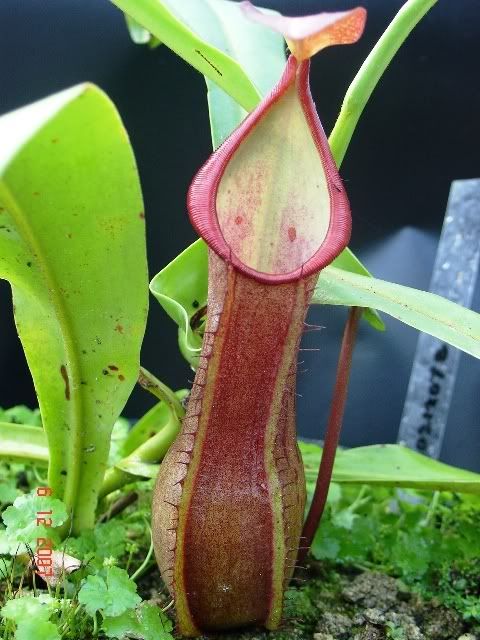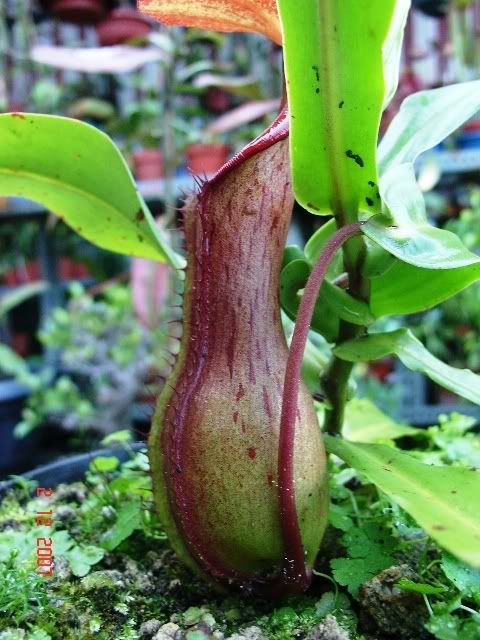wijaya
Junior Member
  Pride of Sumatra
Pride of Sumatra
Posts: 54
|
Post by wijaya on Dec 6, 2007 21:54:38 GMT 8
Any comment are welcome:   |
|
|
|
Post by nilber on Dec 8, 2007 11:29:55 GMT 8
Hi there! The leaves and the "eye-spots" makes me have no doubt that this plant has some reinwarditiana blood. This lower reminds me so much the typical alata ones. I would say reinwarditiana x alata (in this order, as the reinw characteristcs are deeply marked). I loved this plant!  Reaaally beautiful!  Regards, Nílber |
|
|
|
Post by phissionkorps on Dec 8, 2007 14:49:35 GMT 8
Many species and hybrids can display the eyespots. It is more prevalent in reinwardtiana, but certianly not limited to nor a defining feature of the taxon (IMO).
|
|
wijaya
Junior Member
  Pride of Sumatra
Pride of Sumatra
Posts: 54
|
Post by wijaya on Dec 8, 2007 20:35:55 GMT 8
I got this plant from our local nursery, and as usual the seller only now this as "pitcher plant - kantong semar".
This must be a natural hybrid and most probable taken and already adapted from the wild, I am from Sumatra Island and to my quess regarding the available species in Sumatra the parents might be: N. Reinwardtiana, N. Mirabilis and N. Spahtulata. The coloration and spots of the pitcher is quite similar to Spahtulata.
This will narrow down the possiblity of it, thanks.
Ed
|
|
|
|
Post by poweramps on Dec 14, 2007 11:30:28 GMT 8
Check Clarke, C, Nepenthes of Sumatra n Peninsular Malaysia. Could be tobaica, rich coloured form. And plants from danau toba have eyes (eye-spots that is). Can't remember the description, but leaf attachment looks in line with tobaica.
|
|
|
|
Post by David on Dec 14, 2007 21:50:16 GMT 8
Wijaya, "kantong semar" is bahasa Indonesia for Pitcher Plant?  I've learnt my favourite plant name in Indonesian language today. Thanks.  |
|
wijaya
Junior Member
  Pride of Sumatra
Pride of Sumatra
Posts: 54
|
Post by wijaya on Dec 14, 2007 22:27:11 GMT 8
David, You're welcome. That is the most common name for nepenthes in Indonesia and there are lots of other name for them as they called it differently in each regions. To all, Thanks all for helping to identify, looks like it have something to do with Tobaica as well, but it also could be a species, as found out N. Carunculata also got eye's spot inside the pitchers, so only time will tell, as told by senior that it will be easier to identify when it is making upper pitcher. Now this plant is making a new pitcher at my place:  Ed |
|